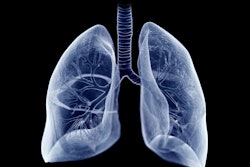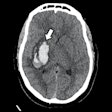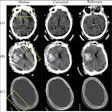Simple, alternative lung cancer screening (LCS) criteria -- specifically expanding the number of years smoking -- increases the number of eligible individuals, in particular those in minority racial and ethnic groups, researchers have reported.
"[We found that a] well-validated prediction model [identifies] alternative simple criteria that better capture high-benefit candidates for LCS, including … groups who are disproportionately excluded by current eligibility criteria (high-benefit Black people, those who smoked for a long duration but at a lower intensity, or those who smoked heavily and quit [more than] 15 years prior)," wrote a team led by Lauren Kearney, MD, of Boston University in Massachusetts. The findings were published August 19 in Annals of Internal Medicine.
Lung cancer screening with low-dose CT (LDCT) has been shown to reduce mortality rates from the disease. In 2021, the USPSTF released updated lung cancer screening guidelines that lowered the starting age from 55 to 50 and adjusted smoking history from 30 pack years to 20 pack years in an attempt to catch lung cancer earlier, when it is more treatable, and address healthcare inequities, especially among different racial and ethnic groups and between men and women. The new recommendation prompted vigorous debate, with some arguing that the update accomplished those goals and others arguing that it did not.
In any case, LCS uptake "remains low, and modeling studies suggest that the USPSTF criteria may not be optimally effective, efficient, or cost-effective because many people who would derive high benefit from LCS [remain] ineligible," the investigators explained.
In a model-based projection study, Kearney's group explored whether alternative LCS criteria could identify more people who would have "high benefit" from regular screening (with the term defined as gaining an average of at least 16.2 days of life from three consecutive annual screenings); the alternative criteria consisted of specifically expanding the smoking timeframe to include people who smoked any amount each year for at least 40 years and those ages 60 to 80 with at least 40 pack years of smoking. The team used data from the 1997-2014 National Health Interview Survey (NHIS), from the 2014-2018 NHIS, and from the 2022 Behavioral Risk Factor Surveillance System to compare the USPSTF criteria to the alternative criteria framework and years of life gained from LCS with low-dose CT imaging.
Using model predictions generated from the study data, the researchers found that the alternative criteria enlarged the number of people eligible for LCS with higher sensitivity and specificity compared with the USPSTF guidelines.
| Comparison of USPSTF lung cancer screening guidelines for those who would benefit from lung cancer screening to an alternative criteria framework | ||
|---|---|---|
| Measure | USPSTF guidance | Alternative criteria |
| Sensitivity | ||
| Overall | 78% | 91% |
| Black individuals | 56% | 83% |
| Hispanic individuals | 73% | 95% |
| Asian individuals | 68% | 94% |
| Specificity | ||
| Overall | 84% | 86% |
The study confirms "the substantial inequity in the current USPSTF criteria, which have poor sensitivity," Kearney and colleagues wrote.
"The [alternative criteria] we identified would result in more effective screening, lead to better support of the ethical principle of 'equal management for equal risk' and substantially reduce racial disparities," they concluded.
The complete study can be found here.




















